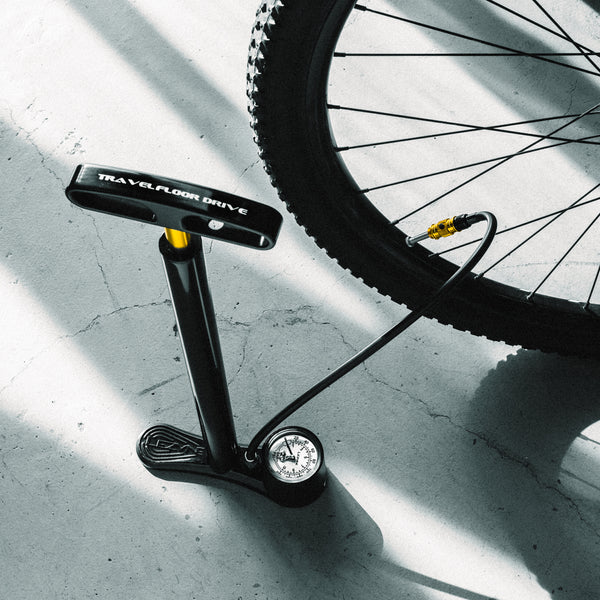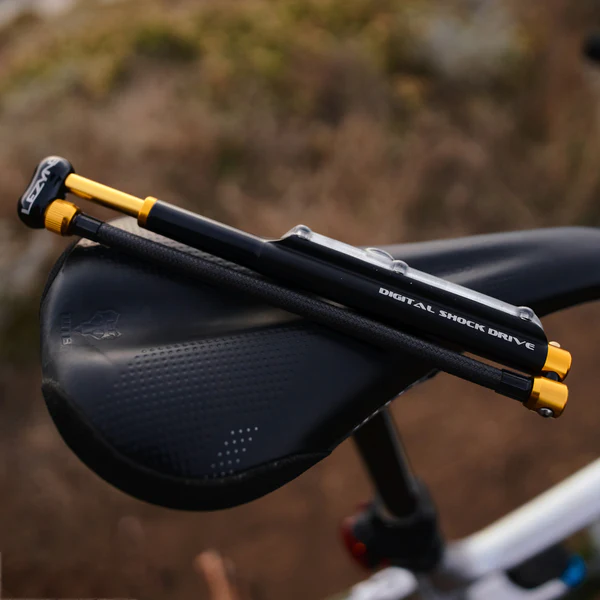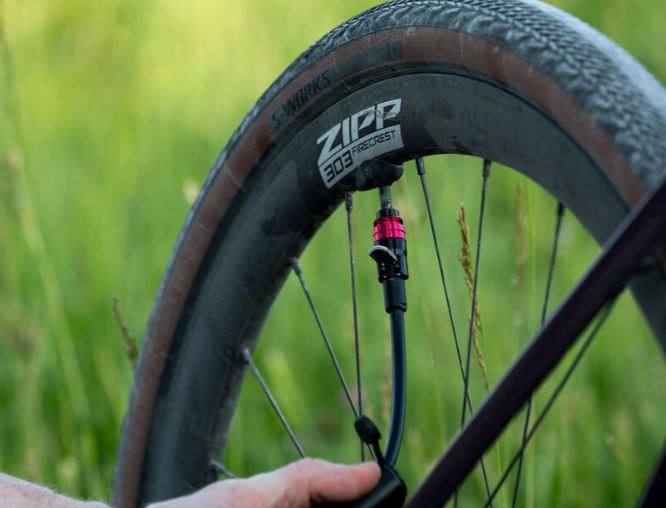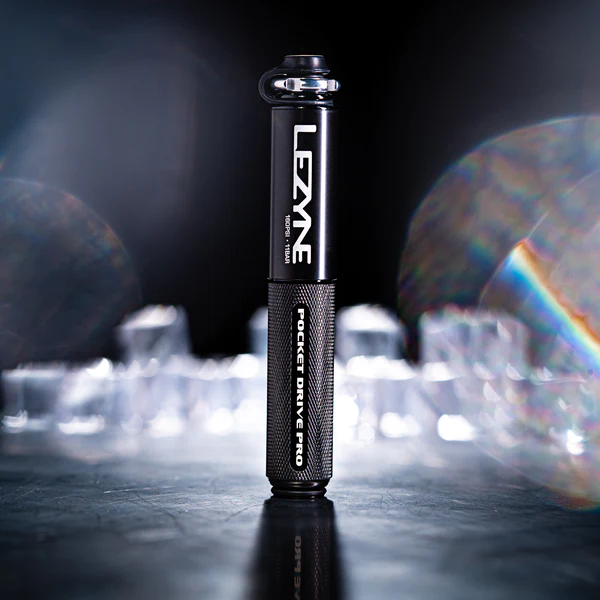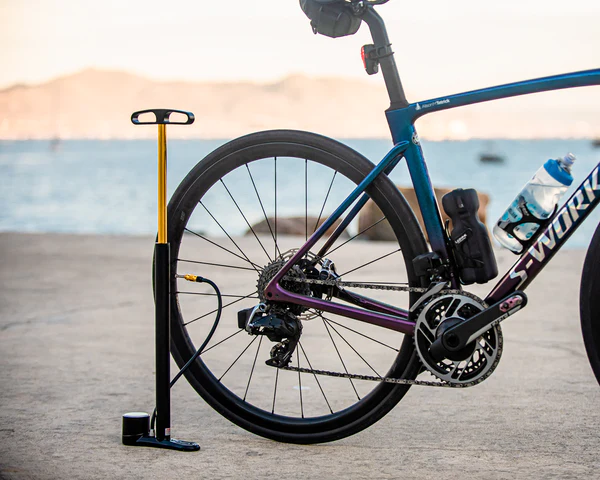Mountain Bike Pump Buyers Guide
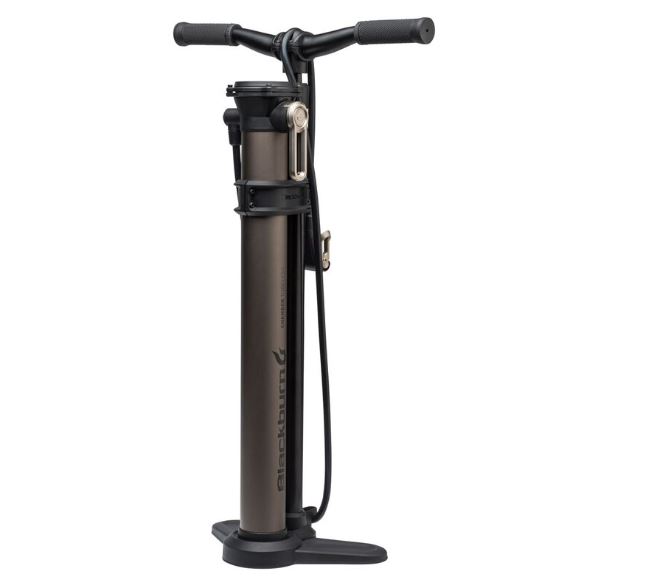
When selecting a mountain bike pump, it’s essential to find one that balances efficiency, durability, and practicality. In this Mountain Bike Pump Buyers Guide, you’ll find an in-depth look at the aspects you should consider:
Introduction: Mountain bike pumps are a crucial accessory for any cyclist, from the casual trail rider to the serious mountain biker. They not only keep your tires inflated to the right pressure for optimal performance but also come in handy for on-the-trail repairs.
Type of Pump:
- Floor Pumps: Best for home use, floor pumps offer high volume air flow, making it easy to quickly inflate mountain bike tires. Their larger size delivers more air per stroke, which is ideal for the wider tires of mountain bikes.
- Hand Pumps: Essential for rides, these portable pumps fit in a backpack or attach to the bike frame. While they require more physical effort, their compact size makes them indispensable for mid-ride fixes.
Mountain Bike Pump Buyers Guide. Valve Compatibility:
- Mountain bike tires generally use Presta or Schrader valves. Ensure that the pump you choose is compatible with your bike’s valve type. Many modern pumps are versatile, catering to both types, or come with adapters.
Pressure Gauge:
- Accuracy is key for optimal tire inflation. A pump with an integrated pressure gauge helps in inflating tires to the specific pressure required, which can vary based on terrain and rider weight.
Pump Volume and Pressure:
- Look for a pump capable of delivering a high volume of air, as mountain bike tires typically operate at lower pressures but have larger volumes than road bike tires.
Build Quality and Materials:
- A robust construction is vital, especially for hand pumps that might endure rough conditions. Materials like aluminum or reinforced plastic offer durability without adding much weight.
Size and Portability for Hand Pumps:
- Consider the size: a smaller pump is easier to carry but might need more strokes to fill a tire. Balance portability with functionality based on your typical ride length and distance from help.
Ease of Use:
- Look for ergonomic designs. A comfortable handle on hand pumps and a stable base on floor pumps make the task of inflating tires less strenuous.
Additional Features:
- Some pumps offer extra functionalities like a bleed valve for precise pressure adjustments or the ability to inflate suspension components, which can be a bonus for trail adjustments.
Brand and Price:
- Renowned brands usually offer reliability and better performance. While price is a consideration, investing in a quality pump can save you trouble and money in the long run.
Warranty and Reviews:
- A warranty can provide peace of mind, while reviews from other cyclists can offer valuable insights into a pump’s real-world performance.
Mountain Bike Pump Buyers Guide. Conclusion:
Choosing the right mountain bike pump involves balancing various factors including type, compatibility, and ease of use. Whether you’re preparing for a casual ride or gearing up for rugged trails, the right pump will ensure that your tires are always ready for the journey ahead. Remember, a reliable pump is not just a tool; it’s an essential part of your mountain biking experience. John
Click here to find the best mountain bike pumps rated and ranked
Click here to find the best gravel bike pumps rated and ranked
Click here to find the best road bike pumps rated and ranked
FAQ’s
Mountain Bike Pump Buyers Guide. What to look for when buying a bike pump?
When buying a bike pump, consider several key factors to ensure you get one that suits your needs:
- Type of Pump: There are floor pumps for home use, hand pumps for portability and emergency use, and CO2 inflators for instant inflation. Choose based on where and how you’ll use the pump.
- Valve Compatibility: Make sure the pump is compatible with your bike’s valve type, either Presta or Schrader. Some pumps fit both or require an adapter.
- Pressure Capacity: Ensure the pump can reach the necessary pressure for your tires, especially important for road bikes which require higher pressure.
- Gauge Accuracy: A built-in pressure gauge helps you inflate your tires to the correct pressure. It should be easy to read and accurate.
- Build Quality: Look for durable materials and solid construction. Metal pumps are typically more durable than plastic ones.
- Ease of Use: Consider how easily the pump attaches to the valve, the effort needed to pump, and the handle’s ergonomics.
- Size and Portability: If you need a portable pump, consider its size and weight. Smaller pumps are easier to carry but may require more effort to fill a tire.
- Additional Features: Some pumps have extra features like a bleed valve for pressure fine-tuning or a dual pump head for different valve types.
Reading reviews and testing the pump, if possible, before purchase can ensure it meets your specific needs.
Mountain Bike Pump Buyers Guide. Does it matter what bike pump you get?
Yes, the type of bike pump you choose does matter, as different pumps serve different purposes and come with varying features that can significantly impact their usability and effectiveness for your specific needs. Here are a few reasons why it matters:
- Type of Cycling:
- Road cyclists often need a pump that can reach high pressures comfortably as road bike tires typically require higher PSI.
- For mountain biking, a pump that can deliver a large volume of air per stroke is more suitable, as mountain bike tires are larger and require less pressure.
- Valve Type Compatibility:
- Bikes come with mainly two types of valves: Presta and Schrader. Some pumps are compatible with both, while others are not. Using the wrong type of pump for your valve can damage the valve or make inflation difficult.
- Usage Frequency and Context:
- For regular home use, a floor pump is ideal due to its ease of use and efficiency.
- For travel or emergency repairs, a portable hand pump or a CO2 inflator is more practical.
- Precision and Pressure Requirements:
- Accurate tire pressure is crucial for optimal performance and tire health. A pump with a reliable pressure gauge is essential for achieving the correct pressure.
- Durability and Quality:
- A well-built pump will last longer and perform better. Cheap pumps might save money initially but can break down quickly or fail to work effectively.
- Ease of Use:
- Features like a comfortable handle, stable base (for floor pumps), and an easy-to-use valve connection can make a significant difference in your experience, especially if you use the pump frequently.
- Additional Features:
- Some pumps offer additional features like pressure release valves, multiple head options, or extra adapters for inflating other items.
In summary, the right bike pump for you depends on your specific cycling needs, the type of bike you have, and where you’ll be using the pump. Ensuring compatibility and considering these factors can help enhance your cycling experience and maintain your bike effectively.
Mountain Bike Pump Buyers Guide. Do mountain bikes need a special pump?
Mountain bikes don’t necessarily need a “special” pump, but they do benefit from certain types of pumps that cater to their specific needs:
- Volume-Oriented Pumps: Mountain bike tires generally require less pressure but more volume. Pumps designed to deliver a higher volume of air per stroke are more efficient for mountain bike tires, allowing for quicker and easier inflation of the larger, lower-pressure tires.
- Gauge Accuracy for Lower Pressures: Since mountain bikes operate at lower pressures compared to road bikes, a pump with a gauge that is accurate at lower pressures is beneficial. This allows for precise adjustments to optimize performance and traction.
- Durability for Off-Road Use: A portable pump that can withstand the rigors of off-road cycling is important. Mountain biking often involves rough terrain, so a hand pump that’s robust and durable is ideal for trail use.
- Shock Pumps for Suspension: If your mountain bike has air suspension (air shocks or forks), you might also need a shock pump. These are specialized pumps designed for the high-pressure, low-volume requirements of air suspension systems and allow for precise adjustments to the suspension.
- Valve Compatibility: Make sure the pump fits the type of valve on your mountain bike tires, whether it’s Presta or Schrader.
While there are pumps specifically labeled for mountain biking, many general-purpose bike pumps can adequately serve a mountain biker’s needs, provided they have features that align with these requirements. The key is to choose a pump that is efficient and convenient for both the specific type of tires and the conditions in which you’ll be riding.
Mountain Bike Pump Buyers Guide. What pump to get for my bike?
To choose the right pump for your bike, consider the following important factors:
- Bike Type and Tire Requirements:
- For road bikes, look for a pump that can reach high pressures, as their tires require higher pressure.
- Mountain bikes benefit from a pump that can deliver a larger volume of air, as their tires are larger and require less pressure.
- Hybrid or commuter bikes need a versatile pump that can handle a moderate range of pressures.
- Valve Compatibility:
- Ensure the pump is compatible with your bike tires’ valve type, either Presta or Schrader. Some pumps fit both, while others may need an adapter.
- Pump Type:
- Floor pumps are ideal for home use with a stable base and built-in gauge but are not portable.
- Hand pumps are portable and designed for on-the-go use, although less efficient for high-pressure inflation.
- CO2 inflators offer quick, one-time inflation and are compact, suitable for emergencies.
- Pressure Gauge:
- A built-in gauge is useful for inflating tires to the correct pressure and should be easy to read and accurate.
- Durability and Build Quality:
- Look for durable materials like aluminum for a long-lasting pump.
- Ease of Use:
- Features like easy valve attachment, comfortable handles, and stable bases (for floor pumps) are important for a good experience.
- Additional Features:
- Some pumps come with extra features like pressure release valves or multiple head options.
Select a pump that best fits your bike type, tire requirements, and usage scenario. Reading reviews and, if possible, testing the pump can also aid in making an informed decision.
Do all bike pumps fit all valve types?
No, not all bike pumps fit all valve types automatically. Bicycles typically use one of two types of valves: Presta or Schrader, and they have different designs and dimensions:
- Presta Valves: These are often found on road bikes and some mountain bikes. They are narrower and have a screw mechanism at the top that needs to be opened before air can be pumped in.
- Schrader Valves: These are the same type as those on car tires and are commonly found on mountain bikes, kids’ bikes, and some road bikes. They are wider and more robust.
Pumps vary in their compatibility with these valve types:
- Specific-Valve Pumps: Some pumps are designed for either Presta or Schrader valves only. They cannot be used interchangeably without an adapter.
- Universal Pumps: Many modern bike pumps come with heads that are compatible with both Presta and Schrader valves. These pumps typically have a dual head or a head that adjusts automatically to fit either valve type.
- Adapters: If you have a pump that only fits one valve type, you can often use an adapter to make it compatible with the other type. These are small, inexpensive, and can be screwed onto the valve.
When purchasing a pump, it’s important to check its compatibility with the valve type of your bike. If you own multiple bikes with different valves, a universal pump or using adapters might be the most convenient solution.
Click here to buy our #1 rated Mountain Bike Pump
